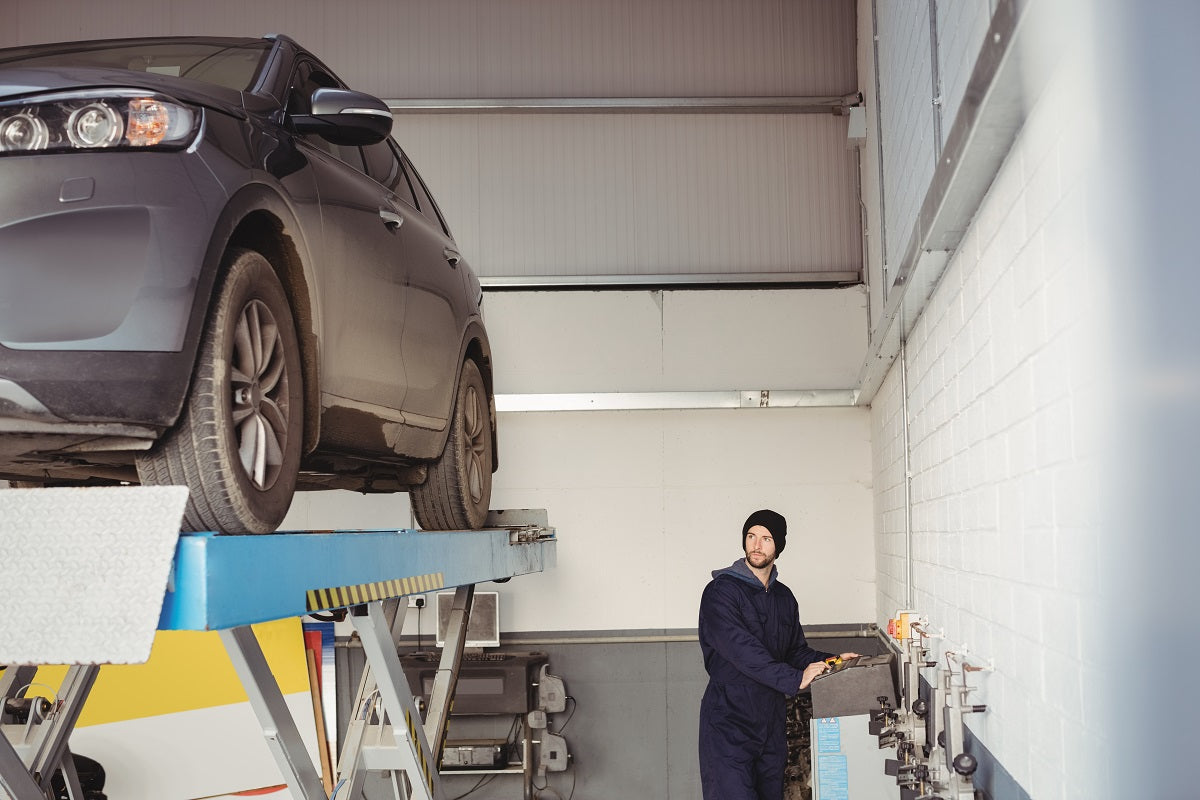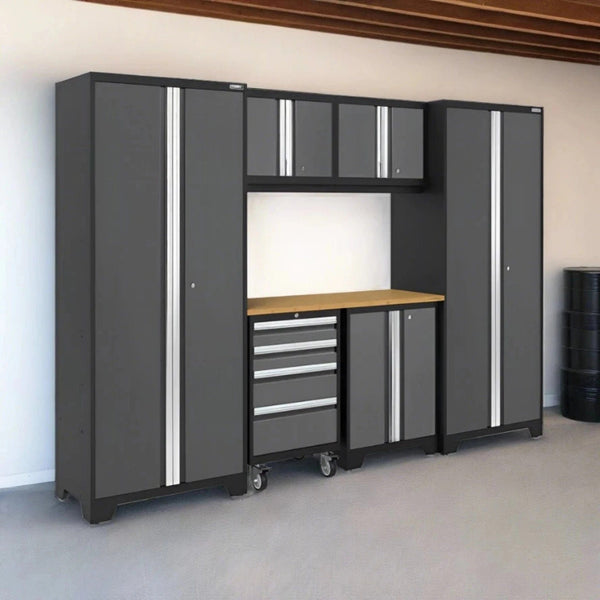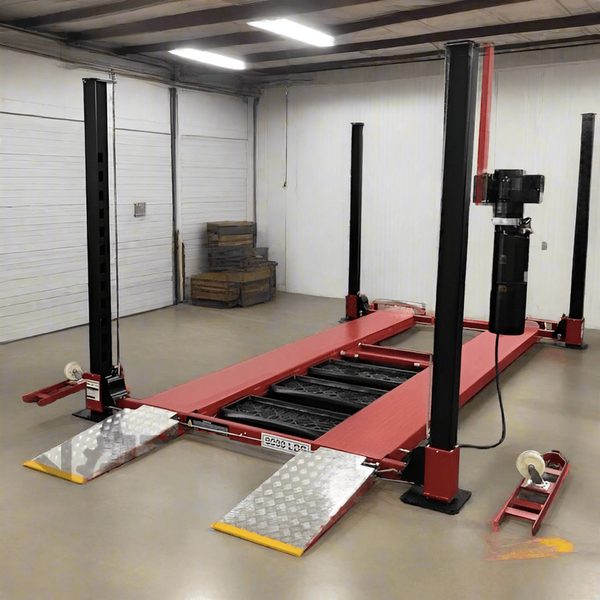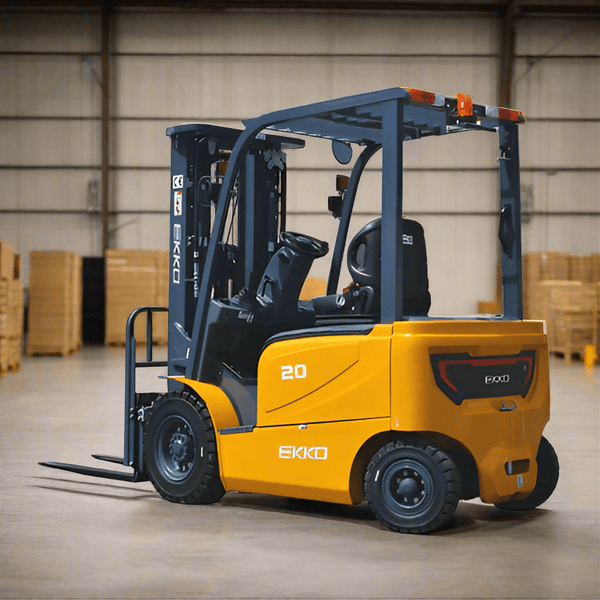
Car Lift Maintenance Checklist
You know all too well just how expensive car lifts can be, and how pivotal they are to your efficiency and safety, be it in your home garage or commercial shop. All of this is to say, regular automotive lift inspection and care cannot be taken lightly.
But you might not be familiar with all that goes into maintaining a car lift. Don’t worry - our car lift maintenance checklist will leave you feeling confident in giving your equipment the attention it needs to work its best for years to come.
We’ll break it down by daily, weekly, monthly, quarterly, and annual service. From lubricating columns to replacing hydraulic fluid, you’ll know exactly what you need to do and when it should be done.
If you ever find yourself looking for a replacement car lift, though, My Garage Supplies is your trusted source. We carry the industry’s top car lift brands and models at unbeatable prices, with world-class customer service from A to Z!
The Role of Automotive Lift Inspection and Care
Whether you’re running a commercial shop or working out of a home garage, your lift carries several thousand pounds above your head, which means even minor issues can create serious safety hazards. Thus, regular automotive lift inspection is of the utmost importance.
Lift maintenance keeps the equipment operating as intended, reduces the risk of injury, and protects your investment. After all, wear and tear over time can affect hydraulic performance, cable tension, anchor stability, and safety locks. These small problems could snowball into uneven lifting, structural failure, or complete system breakdown.
Daily checks might catch a leaking fitting or worn cable guide, while quarterly inspections could uncover misaligned arms or weakened concrete anchors. It’s not about protecting vehicles as much as it is the people who are working under them.
On that note, routine inspections (both visual and functional) may even be a matter of compliance in your commercial shop. The last thing you want is OSHA to stop by and find that your equipment is not in safe working condition. This could even impact your lift warranty!
Manufacturers usually outline their service intervals, inspection points, and torque specs so you don’t have to play the guessing game about when/how to maintain a car lift. Nevertheless, we’ll walk you through a quick car lift maintenance checklist below!
Car Lift Maintenance Checklist: Tips to Protect Your Auto Lift
Whether you're operating a 2-post lift vs 4-post lift, a bit of care extends equipment lifespan, minimizes downtime, and most importantly, prevents accidents. Here’s how to protect your auto lift and all those who work around it.
Tools, Lubricants, and Materials You’ll Need
Make sure you have all the essentials on hand for maintaining vehicle lifts. You’ll use each of these at some point or another throughout the car lift maintenance checklist:
- Torque wrench (for checking anchor bolts)
- Shop rags and degreaser (to clean hydraulic components and rails)
- Non-detergent hydraulic oil (ISO 32 or manufacturer-specified)
- White lithium or silicone grease (for lubricating moving parts)
- Grease gun
- Steel brush (for removing debris on ramps or baseplates)
- Flashlight (for inspecting hard-to-see components)
- Straight edge or level (to verify lift alignment)
- Paint marker or tag system (to track maintenance dates)
Always use products recommended in your lift’s manual. You should not attempt to swap out oil weights or lubricants without checking compatibility.
Daily Maintenance Tasks for Car Lifts
These checks take just a few minutes but should be done before each use. They catch early signs of wear and help prevent serious damage:
- Inspect for visible damage or leaks: Look for cracked welds, hydraulic oil under the lift, or damaged cables.
- Check cables and hydraulic cylinders: Cables should have even tension with no signs of fraying. Cylinders must be free of oil seepage.
- Verify safety lock function: Raise the lift and ensure the locks engage properly on both sides. Never operate a lift with faulty locks.
- Listen for unusual sounds: Creaking, popping, or hissing could indicate misalignment, a loose anchor, or internal component wear.
- Clean work area and platforms: Remove debris, oil, or tools from the runways or arms before operation.
Weekly and Monthly Lift Maintenance Tips
These tasks go beyond basic checks and are put in place to help you keep your equipment working well from a mechanical standpoint for the long haul:
- Lubricate key contact points: Apply lithium or silicone grease to lift columns, arm pins, pulleys, and rollers. Don’t use petroleum-based products unless they’re explicitly approved.
- Check anchor bolt torque: Use a torque wrench to confirm all floor bolts meet manufacturer torque specs (often 85-120 ft-lbs, but verify for your model).
- Inspect hydraulic fluid levels: Top off the reservoir with the correct grade of hydraulic oil. Never mix fluid types!
- Examine cables and chains: Make sure tension is even and check for corrosion, stretch, or kinks. Replace worn cables immediately. Do not attempt to repair them.
- Check for platform level: 4-post lifts or scissor lifts need both sides to rise evenly. Uneven lift can point to hydraulic imbalance or cable stretch.
Quarterly and Annual Lift Maintenance Musts
These deeper checks and services keep your lift compliant with manufacturer warranties and OSHA/ALI guidelines. They only need to be done a few times a year, but they’re incredibly important nonetheless:
- Drain and replace hydraulic fluid (annually): Fluid degrades over time even if it looks clean. Drain from the bottom of the reservoir and refill with fresh oil of the same grade.
- Inspect safety locks and locking plates: Check for excessive wear or burrs. Clean locking surfaces and verify full engagement under load.
- Test electrical components: Check the condition of control switches, relays, and power cords. Replace cracked or exposed wiring immediately.
- Inspect welds, arms, and lift pads: Look for cracks, metal fatigue, or missing rubber pads. Use a flashlight to examine under the platforms or baseplates.
- Review maintenance logs: Document all inspections and repairs for liability, resale value, and warranty coverage.
Environment and Usage Factors That Affect Lift Wear
This car lift maintenance checklist is not one-size-fits-all as far as frequency goes. You should adjust your specific automotive lift inspection and maintenance schedule based on how and where the equipment is used.
For instance, daily and weekly checks are much more important in high-traffic commercial shops. Hydraulic systems and cables will wear faster under constant use than the best residential garage car lifts that aren’t used as often.
Outdoor or unconditioned garages bring their own set of challenges, too. Moisture and temperature swings accelerate rust, oil breakdown, and expansion/contraction of anchor bolts.
The same can be said of dusty or dirty environments. Grease attracts grit. Clean surfaces often to avoid buildup on pulleys, rails, or locking mechanisms.
You should also think about how heavy the vehicles you lift are relative to your equipment’s capacity. Exceeding or even operating near weight limits stresses the entire system. Replace hydraulic fluid and inspect cables more frequently.
Always Follow Manufacturer Guidelines for Your Model
Every lift is different. While this checklist applies to most 2-post, 4-post, and scissor lifts, your specific model may have unique maintenance requirements. Refer to the owner’s manual for:
- Hydraulic oil specs
- Lubrication points and intervals
- Torque settings for anchor bolts
- Cable tension guidelines
- Lift point inspections and safety systems
Failure to follow these guidelines could void your warranty and compromise safety. The key takeaway as we prepare to wrap up this car lift maintenance checklist is to always contact the manufacturer or consult a certified lift technician if you feel uncertain about anything. Better safe than sorry!
Final Words on How to Maintain a Car Lift
That does it for our guide to automotive lift inspection and maintenance. We hope you feel more confident in how to care for your vehicle lift after following along with our car lift maintenance checklist.
Maintenance isn’t complicated, but it does require consistency. Daily checks, proper lubrication, scheduled inspections, and sticking to manufacturer guidelines all play a role in keeping your equipment safe and functional, whether you use your lift once a week or 8 hours a day.
But eventually, all lifts will need to be replaced, even with the best maintenance plan. That’s where we come in. Whether you’re looking for a scissor lift vs 2-post lift or more specifically a symmetric vs asymmetric lift, My Garage Supplies has you covered. We are the #1 choice online for a 4-post car lift, 2-post car lift, single-post car lift, or even a car scissor lift.
Shop the best brands and models at unbeatable prices, with exceptional customer service from A to Z. Connect with our experts today to learn more about our catalog!



